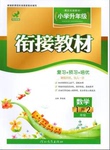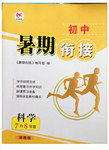题目内容
In the 1920s and 30s the airlines were just beginning. It was unusual for people to travel by air because it was expensive and dangerous. In those days, there were no flight attendants to look after the passengers. Young men ,or “stewards” helped the passengers onto the airplane and carried the passengers’ luggage(行李)but they did not provide food and drinks. But then in 1930,a woman called Ellen Church invented the “stewardess”.
Ellen Church was born in 1904 on a farm in Iowa. She was a different child. She didn’t want to work on a farm or marry a farmer —she wanted a more adventurous(冒险的)life. Ellen studied to be a nurse at the University of Minnesota and then got a job in a hospital. For the next few years she stayed at the hospital but also took flying lessons and got her pilot’s license.
Ellen was twenty-five years old when she first got in touch with Boeing Air Transport. She loved flying but she understood that airlines were a man’s world. Although women like Emelia Earheart were becoming famous, she realized it was impossible for a woman to have a career as a pilot .But she had another idea. Most people were frightened of flying because. flying was still an unreliable(不可靠的) way to travel. There were often delays(延误),many crashes and the bad weathers made many passengers sick. Ellen thought nurses could take care of passengers during flights and B.A.T. agreed.
The young woman from Iowa and seven other nurses became the first air stewardesses.
At first pilots were unhappy because they did not want stewardesses on airplanes, but passengers loved the stewardesses. In 1940 there were around 1000 of them working for different airlines. The early “stewardesses” had to be under twenty-five-year-old, single and slim. When a woman joined an airline, she had to promise not to get married or have children. It was hard job and not well paid. They worked long hours and earned $1 an hour.
In the 1970s, stewardesses were unhappy in their job and airlines had to make some changes. Since the 1970s, “stewardesses” have been called flight attendants. They are well paid and work fewer hours than in the past.
1.The last sentence of the first paragraph suggests that _________.
A.the word “stewardess” was made up by Ellen Church
B.Ellen Church was the first woman who flew a plane
C.Ellen Church was the first woman who worked on a plane
D.Ellen Church was the first woman passenger on a plane
2.From the second paragraph, we learn that ________.
A.Ellen did not behave in the same way as most as other girls
B.Ellen’s family was not rich enough to support her education
C.Ellen was fond of working as a nurse in the hospital
D.Ellen has an unhappy childhood that changed her completely
3.The main reason for Boeing Air Transport offering Ellen the job was ________.
A.her flying experience B.her university education
C.her nursing experience D.her life attitudes
4.According to the passage, in the 1940s a woman had to ________ if she wanted to be a stewardess.
A.be a nurse B.be married C.be a mother D.be young
5.The passage mainly talks about _______.
A.the background of early flying pilots B.the experience of flying passengers
C.the history of early flight attendants D.the development of airplanes
1.C
2.A
3.C
4.D
5.C
【解析】
文章主旨大意:本文是一篇说明文。文章通过介绍Ellen如何成长为空姐,从而介绍了介绍了早期空姐的发展史。
1.由第二段中的pilot’s license可知Ellen拿到了飞行员执照,故可猜测Ellen可以在飞机上工作。
2.由She was a different child. She didn’t want to work on a farm or marry a farmer —she wanted a more adventurous(冒险的)life. 可知,她的想法与别人不同,答案A正合此意,故选A项。
3.根据第二段最后两句可知Ellen曾经做过多年的护士;根据第三段最后一句航空公司采纳了Ellen承担照顾乘客的想法可推知之所以她的想法被采纳是因为她有做护士的经历。
4.根据第五段中的 The early “stewardesses” had to be under twenty-five-year-old, single and slim.可知早期的空姐要在25岁以下,单身,而且苗条。所以可推知20世纪40年代的时候想当空姐必须要年轻。
5.本文讲的主要是早期空姐的发展史,答案C正合此意,故选C项。

 鹰派教辅衔接教材河北教育出版社系列答案
鹰派教辅衔接教材河北教育出版社系列答案 初中暑期衔接系列答案
初中暑期衔接系列答案| 阅读理解。 | ||||||||||||||||||||
| An index (索引) is usually at the end of a hook. It tells us most of the topics the writer talks about in the book. The topics are usually listed from letter A to letter Z. Under each topic, there are some small topics, and we can find the page number after each small topic. Here is part of an index from a cookbook (烹调手册):
| ||||||||||||||||||||
| 1. The whole passage tells us about _________. | ||||||||||||||||||||
| A. how to become a very good chef B. what kind of food is very popular C. how to use the index in a cookbook | ||||||||||||||||||||
| 2. How many small topics are listed in the index of the cookbook the writer shows us? | ||||||||||||||||||||
| A. 4. B. 16. C. 220. | ||||||||||||||||||||
| 3. If we are learning to make dry potatoes, we may turn to page _________. | ||||||||||||||||||||
| A. 63 B. 220 C. 137 | ||||||||||||||||||||
| 4. From this passage, we know that apple and beef is a kind of _________. | ||||||||||||||||||||
| A. salad B. fruit C. sandwich | ||||||||||||||||||||
| 5. In this passage* the word "green" means a kind of _________. | ||||||||||||||||||||
| A. color B. salad C. cookbook |